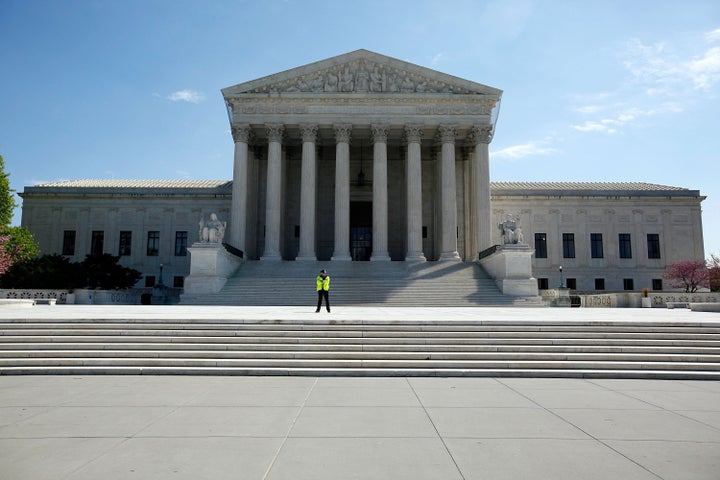
Think about the last time you voted. Was it in a school? A government building? What about a church? It's only intuitive that where you vote, and what's visible in the polling location, impacts how you vote. That's why there is a political line 75 to 100 feet or more from the polling place over which ads for various campaigns and parties must not cross. It would be an unfair advantage, and possibly even intimidating, for campaigns to advertise any closer. It's no different with religious messages, many of which have real political consequences. So it's time to stop voting in churches, which are hardly neutral grounds for the issues of the day.
A Baylor University study just published in the International Journal for the Psychology of Religion found that having a church in clear sight can influence people's answers to questions. Co-author Wade Rowatt pointed out that the "important finding here is that people near a religious building reported slightly but significantly more conservative social and political attitudes than similar people near a government building." The Baylor study confirms an earlier Stanford University study that shows the same effect when looking specifically at how people's voting place influences their vote. Stanford researcher Jonah Berger said, "Voting in a church could activate norms of following church doctrine. Such effects may even occur outside an individual's awareness." A follow-up study in the laboratory asked participants to vote on several issues after being shown images of specific voting places. This showed that participants were less likely to support a stem-cell initiative if they were shown church images than if they were shown school images or a generic photo of a building.
Psychologically, this phenomenon is known as "priming," where what you are initially exposed to goes on to impact your responses or decisions afterward. It's a well-researched effect and explains what is happening in the polling places. So the studies covering this issue are sound and their conclusions make sense: where you vote matters.
Since polling place influences the vote, governments and election boards should do all they can to find neutral voting locations. And it would seem very unlikely that churches would be chosen if neutrality were the aim. Why not use schools, courthouses, firehouses and the like instead? It's been argued that some places exist where the church is the most convenient, and that may be true in certain exceptional rural areas, but that's no justification for the many thousands of churches used in some thirty percent of polling places today.
When connecting with American Humanist Association members, examples of clear-cut cases of abuse abounds. An Illinois member voted in a church that displayed a four-foot wooden crucifix right above the election judges. Another member in California was confronted with a large marble plaque dedicated to the "unborn children" who are "killed" by abortion and containing a quote from the Bible justifying the notion that the soul is alive in the womb. And a New York member voted in a room featuring large religious slogans on the wall behind the voting machines. Sure there are some churches that utilize gymnasiums carefully cleaned of religious paraphernalia, but even those places have the power to inappropriately influence the vote. Let's move the vote exclusively to public buildings.